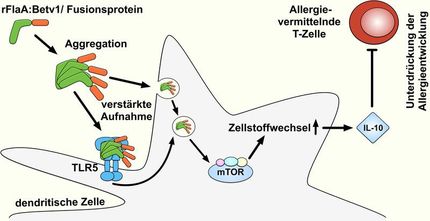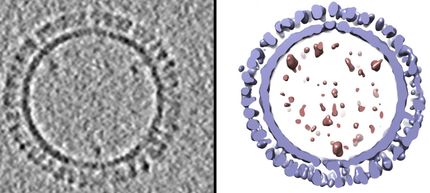Pandemic flu: gaps in preparedness remain
The current outbreak of influenza A (H1N1) is testing pandemic preparedness strategies across the globe. While widely implemented strategies seem to have prepared the world better than ever before for such an outbreak, important gaps regarding the logistics of drug and vaccine distribution remain.
Strategies put to the test
Responding to growing fear of a flu pandemic over recent years, many governments around the world, encouraged by the WHO, have developed pandemic preparedness plans. These strategies, which encompass a wide range of measures including the stockpiling of antiviral drugs, surveillance, measures to prevent the spread of infection and the development of pandemic vaccines are now being put to the test as a result of the current outbreak of H1N1, or swine flu. So far, pandemic preparedness seems to be living up to the challenge - the response seen since late April has been swift, visible and appears to be highly effective. Due to the availability of antiviral drugs, advances in vaccine development and years of careful preparations, the world is better equipped than ever before to successfully tackle an influenza pandemic.
However, to date influenza A (H1N1) has proved to be relatively mild with Mexico the only country to report significant mortality. Consequently, the current outbreak has not yet tested the limits of global public health systems. The real test for pandemic flu preparedness will come if the virus spreads more widely or returns in a more severe form in the coming winter. While it is very hard to predict the future development and size of threat caused by H1N1, Datamonitor believes that several key challenges remain in order to successfully tackle the possible pandemic if H1N1 regains momentum and severity.
Antivirals are a good first-line defense strategy, but may become ineffective in later pandemic waves
The most widely applied countermeasure for H1N1 is the rapid distribution of government and WHO stockpiles of influenza antivirals such as Roche’s Tamiflu (oseltamivir) and GlaxoSmithKline’s Relenza (zanamivir). Over the last five years governments around the world have invested significant amounts of money in establishing emergency stockpiles. The US alone has built up a supply of 50 million courses of antiviral medicine on a federal level and a further 22 million courses on a state level. While even these amounts are not sufficient to protect the entire population, they should have a significant impact on protecting people working on the front line of a pandemic, such as healthcare workers, thereby limiting the spread. However, given the widespread confusion in the community regarding the mechanism of action and time of administration of influenza antivirals, it is crucial to improve public education in order to avoid panic and unnecessary supply shortages. Also, considering the possibility that the pandemic influenza virus could become resistant to Tamiflu and/or Relenza, governments should not rely on antivirals alone, as they may become ineffective in later waves of the pandemic.
An immediate switch from seasonal to pandemic influenza vaccine production is highly unlikely
A further strategy to counter the threat of an H1N1 pandemic is the development of a vaccine. Since the current manufacturing process for influenza vaccines in chicken eggs takes several months, rapid deployment of a H1N1 vaccine can become very difficult indeed. Moreover, the limited manufacturing capacity for influenza vaccines in egg-based systems requires a quick decision on whether and when to switch the currently on-going production of seasonal vaccines to the pandemic type. Datamonitor does not expect this switch to happen immediately, as this would jeopardize vaccine supply for the prevention of seasonal influenza in the 2009/2010 influenza season. With the H1N1 seed strain for vaccine development only expected to be available in late May/early June, a more likely scenario is the sequential production of seasonal and pandemic vaccines for the northern hemisphere. We will learn more when the WHO announces its decision on May 14.
Novel vaccine technologies could add significant value in case of a severe outbreak
The US government has provided significant funding to vaccine manufacturers over the last decade to provide incentives for the extension of influenza vaccine manufacturing capacity in the US and the development of new, pandemic-relevant technologies and products. Thanks to this increased investment and scientific advances in the vaccine sector, manufacturers have developed and advanced strategies such as adjuvants and novel manufacturing systems. These have the potential to overcome the current bottlenecks of long vaccine production times and manufacturing capacity shortages for pandemic influenza supplies.
However, most of these new technologies have not yet received FDA approval. Unless the H1N1 pandemic takes a sudden turn for the worse, Datamonitor expects regulators to continue relying on the established and lengthy, but proven safe influenza vaccine manufacturing process in chicken eggs. However, a severe wave of the pandemic could rapidly expose supply issues that will need to be overcome by resorting to some of the new approaches in development. Several companies investigating novel influenza vaccine technologies, such as Baxter and Connecticut-based Protein Sciences, have already announced programs for the development of H1N1 vaccines.
Logistics of vaccine administration will be a key bottleneck in a pandemic situation
The supply chain for influenza vaccines is long and involves a large number of stakeholders, a situation that could become a threat with a severe pandemic. In Datamonitor’s opinion, speed, efficient mass distribution and delivery of vaccines could become a serious bottleneck in a pandemic response. Health systems worldwide will have to care for millions of persons seeking medical care simultaneously. A sufficient number of immunizations will have to be administered in the shortest possible amount of time, requiring a seamless supply chain for the final product. From a logistics point of view, this will require the rapid transformation of existing public health infrastructure to deliver mass vaccinations, e.g. by training volunteers to administer vaccines to overcome any lack of qualified healthcare personnel.
A further challenge is a likely conflict between reaching people as fast as possible to deliver vaccines, such as through mass vaccination in public places versus theneed to limit disease transmission, perhaps through social distancing or quarantine. Potential staff shortages or social panics following a pandemic outbreak means supply chains of influenza vaccines and antivirals will have to be secure to remain effective even in case of a severe disease outbreak.
Optimization of pandemic preparedness in the following months will be vital
Since, from the current point of view, the current H1N1 outbreak is likely to remain relatively mild over the summer months in the northern hemisphere, governments and healthcare authorities will have an opportunity to reassess and improve their pandemic strategies over the coming months. This interim period should be used to re-evaluate and optimize the pandemic response, to replenish stockpiles and develop and manufacture a vaccine before a more virulent version of the influenza A (H1N1) virus can return in the fall, says Datamonitor infectious diseases senior analyst Hedwig Kresse. “Datamonitor believes these issues will require significant coordination between medical, industry, political, financial and regulatory stakeholders across the globe in order to be addressed successfully.
“A timely re-assessment and implementation of anti-pandemic measures is our best hope to significantly reduce the impact of a pandemic, and avoid the millions of deaths observed in previous global influenza outbreaks,” she says.






















































